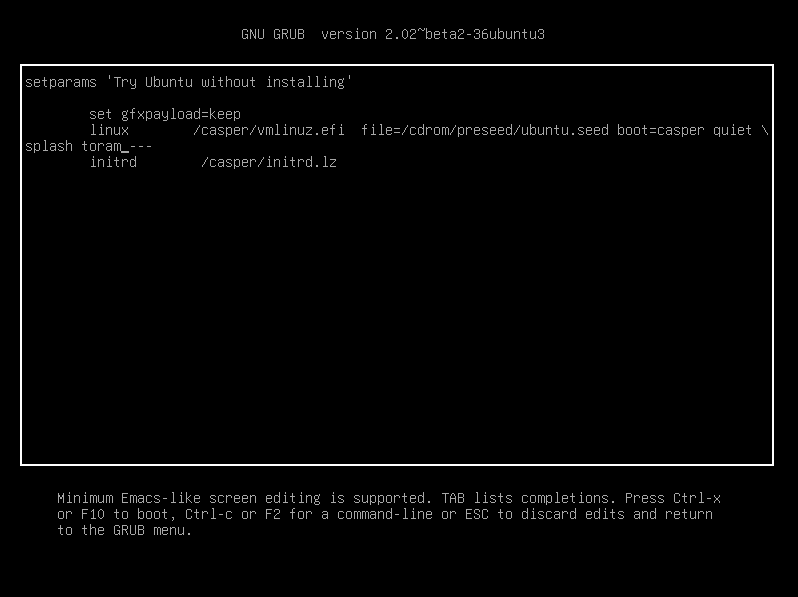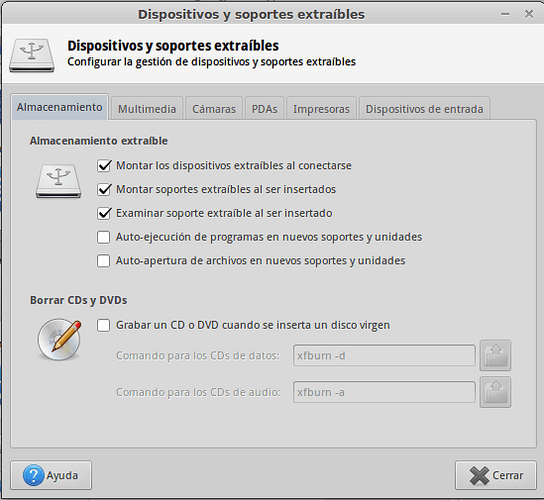I don’t know Macrium Reflect, I use dd to clone partitions, so I dunno if what I say will work for you (it should I guess).
When cloning a disk, it clones everything, including all UUID’s and LUKS-id’s stored in files. When you boot dom0, it will look into /etc/fstab and /etc/crypttab to look for, and use the right id’s for your disks/partitions (PV’s)/Volume Groups/Logical Volumes.
Maybe Macrium Reflect is different, but when you clone using dd then on boot your qubes will look for your SSD id numbers, but only finds your HDD id numbers so it will wrongfully try to access your HDD, so that’s something for you to look into.
But that not the reason why neither disk is recognized as bootable in the BIOS. That’s probably because /boot partition (or EFI (/boot/efi) partition) is corrupt (or not plugged in (usb?))
What I would suggest is:
- find yourself a linux live usb (I like xUbuntu LiveUSB)
- (optional) boot “to ram”
When you see the boot EFI menu, press [e]
then add the text ‘toram’ as shown here:
now press [F10] to boot
Remove LiveUSB when booted
- install boot-repair
sudo add-apt-repository ppa:yannubuntu/boot-repair
sudo apt-get update
sudo apt-get install -y boot-repair && boot-repair
When that’s done, what you need is:
- a /boot partition (they recomend 1Gb, but it doesn’t need to be that size)
- (optionally) an EFI partiton
in a terminal:
sudo gparted
format your boot partition as ext4, and your efi partition as fat32/efi (or fat16/efi)
[edit] oh, if you need fat16, you will have to install mtools => sudo apt-get install mtools
If you don’t have an efi partition, I think you need to format the boot partition as fat32/efi (not sure)
put flags ‘efi’ and ‘boot’ on the efi partition
close gparted when done
cd /media/xubuntu
mkdir boot
mkdir boot/efi
sudo mount /dev/sda2 boot/ #replace ‘sda2’ with your boot partition
sudo mount /dev/sda1 boot/efi/ #replace ‘sda1’ with your efi partition
this is from memory… you may have to add ‘sudo’ in front of some commands
Now before you continue turn off auto-mounting of removable disks and media, otherwise all your logical volumes will start mounting after the next step. so open the menu bar and type “media” and you will see something like ‘removable disks and media’
=> turn off everything
open a file-manager and access your encrypted LUKS partition. It will ask password
If you did the above on your HDD, then you can now run boot-repair (as root)
sudo boot-repair
go to ‘advanced’ tab and make sure:
- boot partition is sda2 # or whatever it is in your case
- efi partition is sda1
- place boot flag on sda1
- select the right qubes-os to boot
dang what else was there… (I did this like half an hour ago to fix my qubes-os… don’t remember :-s)
Check all settings
When that’s done you should be able to boot from your HDD again which gives you the opportunity to make backups.
If you did the above on your SDD, then you first have to change some details before running boot-repair
sudo blkid
if the list is long and unreadable
sudo blkid | grep /dev/s
(sdd’s and (I think) hdd’s are listed as /dev/sdx, so that should list them. For nvme’s do ‘grep /dev/n’)
- check all ID’s and entries in /etc/fstab and /etc/crypttab
sudo mousepad /etc/fstab # mousepad or gedit or nano or …
sudo mousepad /etc/crypttab
in my case… the LUKS-id is similar to the UUID’s:
my /etc/crypttab :
luks-53ed...5e28 UUID=53ed...5e28 none
luks-0b7c...07e0 UUID=0b7c...07e0 none
luks-5e4a...5b74 UUID=5e4a...5b74 none
You may want to replace your HDD id’s with your SSD id’s there.
Now if somehow the output of sudo blkid | grep /dev/s tells you that the id’s of your SSD and HDD are identical (cloning?), then that may give problems when booting if both are connected at the same time… in that case you may want to physically remove your HDD
Try to get your back-ups, and have fun! 


